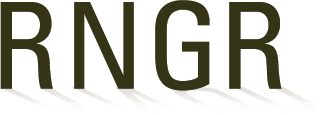Search
11752 items matching your criteria.


-
 Approaches to European Alder Improvement
Approaches to European Alder Improvement
-
European alder ( Alnus glutinosa L. Gaertn.) is an increasingly important species in the Eastern United States for use in soil reclamation, biomass ...Richard B. Hall and Terry L. Robison
-
 Approaches to Integrated Pest Management of Fusarium Root Disease in Container-Grown Conifer Seedlings
Approaches to Integrated Pest Management of Fusarium Root Disease in Container-Grown Conifer Seedlings
-
An integrated approach to management of Fusarium root disease in container-grown conifer seedlings includes reducing levels of pathogen inoculum within the ...USDA Forest Service
-
 Approaches to Integrated Pest Management of Fusarium Root Disease in Container-Grown Conifer Seedlings
Approaches to Integrated Pest Management of Fusarium Root Disease in Container-Grown Conifer Seedlings
-
An integrated approach to management of Fusarium root disease in container-grown conifer seedlings includes reducing levels of pathogen inocu-lum within the ...David L. Wenny, R. Kasten Dumroese and Robert L. James
-
 Appropriate Technology in Tree Breeding: Gain With Les Pain
Appropriate Technology in Tree Breeding: Gain With Les Pain
-
Appropriate technology principles can be applied to tree breeding strategies, incorporating needs of forest managers and silviculturists. The strategy of ...Sharon T. Friedman
-
 Appropriate Technology in Tree Breeding: Gain With Les Pain
Appropriate Technology in Tree Breeding: Gain With Les Pain
-
Appropriate technology principles can be applied to tree breeding strategies, incorporating needs of forest managers and silviculturists. The strategy of ...Sharon T. Friedman
-
 © Appropriate use of genetic manipulation for the development of restoration plant materials
© Appropriate use of genetic manipulation for the development of restoration plant materials
-
 The Aquarium Tester -- A Fast, Inexpensive Device for Evaluating Seedling Quality
The Aquarium Tester -- A Fast, Inexpensive Device for Evaluating Seedling Quality
-
Larry Palmer and Ivend Holen
-
 Araucaria angustifolia
Araucaria angustifolia
-
Peter Laharrague
-
 Araucaria heterophylla (Salisb.) Franco
Araucaria heterophylla (Salisb.) Franco
-
AraucariaceaeJohn K. Francis
-
 Arbuscular Mycorrhizal Fungi Associated With Rhizosphere of Casuarina in Morocco
Arbuscular Mycorrhizal Fungi Associated With Rhizosphere of Casuarina in Morocco
-
The presence and diversity of arbuscular mycorrhizal fungi (AMF) in the rhizosphere of Casuarina trees was studied in four regions of Morocco. The results ...N. Hibilik, S. Msairi, S. El Gabardi, K. Selmaoui, M. Chliyeh, A. Ouazzani Chahdi, A. Ouazzani Touhami, R. Benkirane and A. Douira
-
 Arbuscular Mycorrhizal Inoculation Following Biocide Treatment Improves Calocedrus decurrens Survival and Growth in Nursery and Outplanting Sites
Arbuscular Mycorrhizal Inoculation Following Biocide Treatment Improves Calocedrus decurrens Survival and Growth in Nursery and Outplanting Sites
-
Commercial production of tree seedlings often includes various biocidal soil treatments for disease control. Such treatments can be effective in eliminating or ...David Steinfeld and Michael Amaranthus
-
 Arbuscular Mycorrhizal Inoculation in Nursery Practice
Arbuscular Mycorrhizal Inoculation in Nursery Practice
-
The beneficial plant-fungus association known as arbuscular mycorrhiza (AM) or vesiculararbuscular mycorrhiza (VAM) is known to improve phosphorus uptake, ...Ted St. John
-
 Are Alternating Temperatures More Beneficial Than Constant Temperatures During Stratification of Yellow Poplar Seed?
Are Alternating Temperatures More Beneficial Than Constant Temperatures During Stratification of Yellow Poplar Seed?
-
A study by Boyce and Hosner (1963) indicated that moist storage of yellow poplar (Liriodendron tulipifera L.) samaras at alternating weekly temperatures of ...Robert E. Adams
-
 Are Bare Root Nurseries Obsolete?
Are Bare Root Nurseries Obsolete?
-
Before we can decide whether any concept or operation is obsolete, we must state our objectives. In forestation, our objective is to obtain high survival, ...Richard W. Tinus
-
 Are Differences in Formulations of Fertilizers for Use at Planting Important?
Are Differences in Formulations of Fertilizers for Use at Planting Important?
-
Fertilization at planting is carried out quite widely in British Columbia, Washington and Oregon, but the benefits are not precisely known. Examples of no ...R. van den Driessche
-
 Are Your Seedlings Being Buried?
Are Your Seedlings Being Buried?
-
Certain sites are difficult to regenerate after clear cutting or wildfire. Heat and drought are well recognized as limiting factors on many such areas, but ...Jack S. Rothacher and Jerry F. Franklin
-
 Area Potentially Available to a Tree: A Research Tool
Area Potentially Available to a Tree: A Research Tool
-
Accounting for competition influences on individual tree growth has been a stumbling block for many forest scientists. Partitioning the forest floor into ...W. R. Smith
-
 Armillaria Root Rot
Armillaria Root Rot
-
Fungi of the genus Armillaria are common facultative parasites on more than 600 plant species throughout the world. Root diseases caused by these fungi are ...USDA Forest Service
-
 Aronia: cultural and production considerations as an alternative crop
Aronia: cultural and production considerations as an alternative crop
-
 Around the World Nursery Inoculations and Conifer Establishment Using Rhizopogon Mycorrhizal Fungi
Around the World Nursery Inoculations and Conifer Establishment Using Rhizopogon Mycorrhizal Fungi
-
Rhizopogon is a large genus mycorrhizal fungi of particular importance to the Pinaceae. Rhizopogon that benefit conifer outplanting performance species occur ...Mike Amaranthus
-
 Arresting Plant Maturation To Maintain High Propagation Success With American Sycamore Cuttings
Arresting Plant Maturation To Maintain High Propagation Success With American Sycamore Cuttings
-
Loss of rooting potential with maturation in sycamore limits clonal propagation of selected clones by conventional cuttings. By the time the clones can be ...Samuel B. Land, Jr.
-
 Arsenic Toxicity in Red Pine and the Persistence of Arsenic in Nursery Soils
Arsenic Toxicity in Red Pine and the Persistence of Arsenic in Nursery Soils
-
Small amounts of arsenic occur in all soils and plants, but use of arsenic-bearing insecticides in earlier years and of arsenical herbicides recently has ...E. L. Stone and T. Greweling
-
 The Art of Soil Mediums
The Art of Soil Mediums
-
Whether its an outside vendor providing raw materials or the finished potting mix, growers work hard to find the right combination for their crops.D. Rafter
-
 © Artificial dispersal as a restoration tool in meadows: sowing or planting?
© Artificial dispersal as a restoration tool in meadows: sowing or planting?
-
 Artificial Hybridization and Grafting Methods With Ulmus Americana
Artificial Hybridization and Grafting Methods With Ulmus Americana
-
Since 1957, a study of artificial hybridization and grafting methods using the American elm, Ulmus Americana, has been under way at the State University, ...John A. Winieski
-
 Artificial Hybridization in the Genus Ulmus
Artificial Hybridization in the Genus Ulmus
-
Nearly all of the species in the genus Ulmus growing in the Northeastern United States are attacked by Dutch elm disease ( Ceratocystis ulmi ). With this ...Samuel P. K. Britwam
-
 Artificial Inoculation Of Fumigated Nursery Beds With Endomycorrhizae
Artificial Inoculation Of Fumigated Nursery Beds With Endomycorrhizae
-
Adding soil with inoculum to fumigated beds increased production of large diameter sweetgum seedlings but had no such effect on sycamore.David South
-
 Artificial Introduction of Virulent and Hypovirulent Strains of Endothia parasitica Using Large Scratch Wounds
Artificial Introduction of Virulent and Hypovirulent Strains of Endothia parasitica Using Large Scratch Wounds
-
The goal of this study is to follow the course of future infections on both the scratched trees and various check trees. To do this, isolations will be made ...William L. MacDonald
-
 Artificial Light-A Possible Pretreatment Method for Dormant White Spruce Seed
Artificial Light-A Possible Pretreatment Method for Dormant White Spruce Seed
-
A quick pretreatment method for internally dormant seed would be a valuable aid to nurserymen in testing germination of seed from an unfamiliar source or ...Howard M. Phipps
-
 Artificial Lighting Fails to Stimulate Height Growth of White Pine Seedlings in Nursery Studies
Artificial Lighting Fails to Stimulate Height Growth of White Pine Seedlings in Nursery Studies
-
During the 1957-60 period the Tennessee Valley Authority studied several methods of stimulating growth of white pine to reduce the time required to produce ...Douglas Bean





